Does Squatting Make You Shorter: Unpacking Myths and Facts
Author:
Reviewed by:
(21 years of Oly Lifting experience)
Unlock your full potential by engaging with our experts and community! Have questions about your fitness journey or looking for expert advice on weightlifting techniques? Don’t hesitate — leave a comment below and Ihor Shymechko will provide a personalized answer and insights to help you reach your goals.
Torokhtiy is reader-supported. Some links are affiliate links, and we may earn a commission at no extra cost to you. See our disclosure page for details.
Unfolding the mysteries of exercise and stature, we stand on the brink of a question as old as fitness itself: do squats compress more than our muscles and affect our height? Embark with us on an explorative journey into the heart of the squad and its alleged effect on height.
Does squatting make you shorter? No! This article examines the resilience of the spine during squats, the difference between types of loading and real-world evidence to debunk the myths that squatting reduces height. Properly performed squats strengthen the spine and may even improve posture.
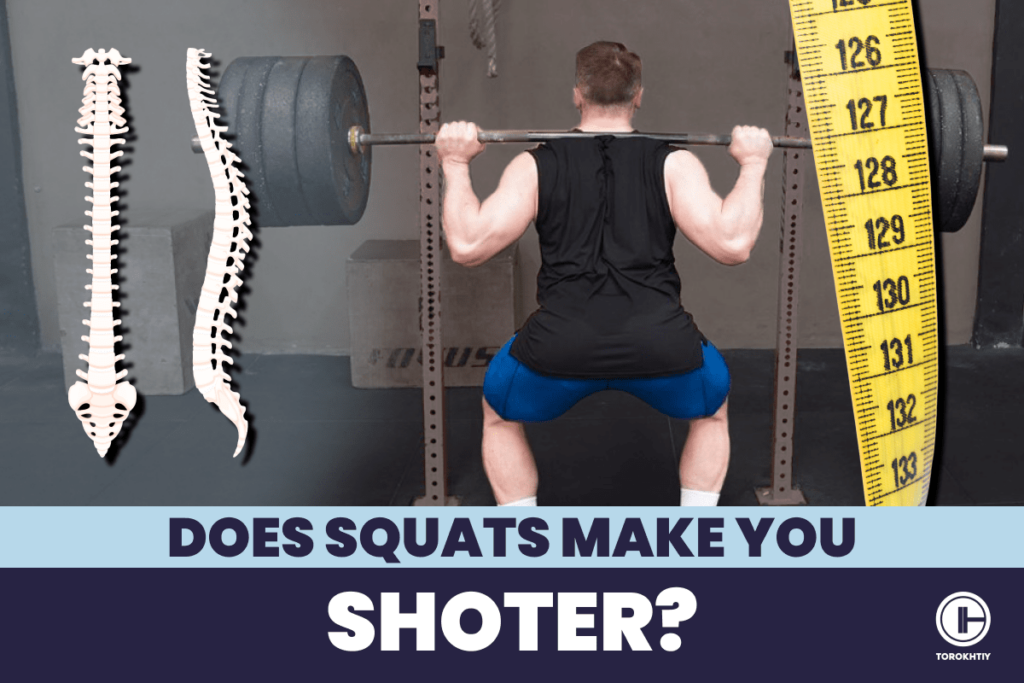
In this insightful article we delve into the spinal anatomy`s remarkable resilience, the difference between short-term and long-term loading during squatting and the empirical evidence from the world of weightlifting. We will unravel the biomechanics of squats, assess the factors that truly contribute to height variation and dispel the enduring myth with science and real-world observation.
Squats and Spinal Compression: Do They Make You Shorter?
As we lower ourselves into the world of squats and spinal health, a question often arises from the depths: does squatting make you shorter or does this foundational exercise have the power to alter one`s height? This section will explore the resilience of the spinal structure against the forces of squatting and whether this form of exercise compresses more than just our muscles.
1. Spine Anatomy and Resilience
The human spine, an architectural masterpiece, is crafted to bear life’s burdens, gracefully handling the pressures exerted through various activities, including the rigorous demand of exercise.
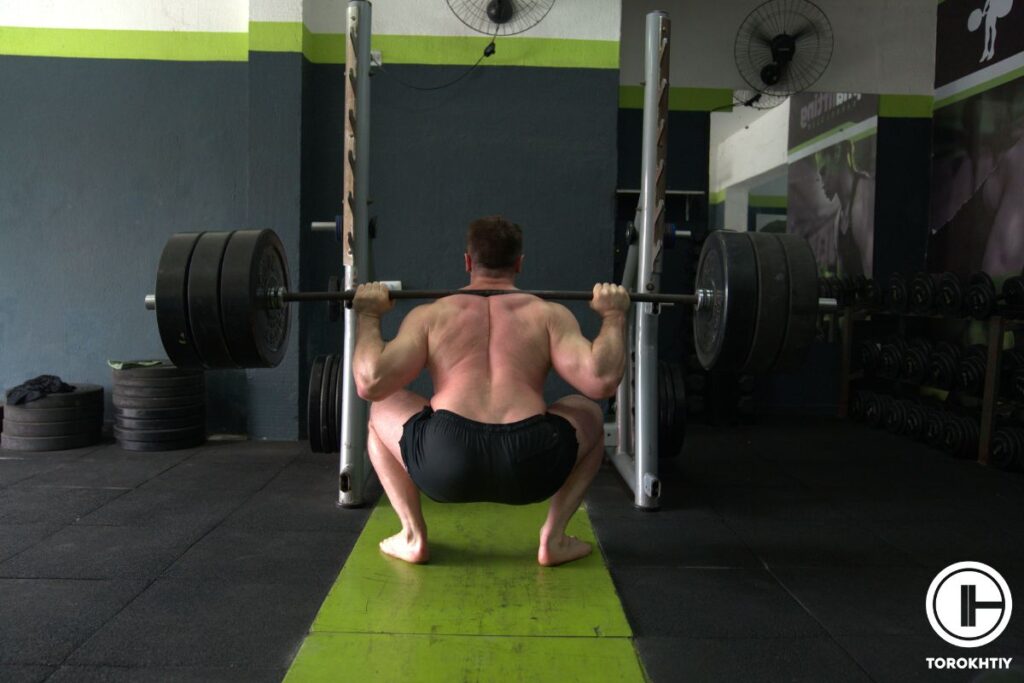
This complex structure, a column of vertebrae cushioned by intervertebral discs and reinforced by a network of muscles and ligaments, is both sturdy and flexible. Its design allows it to absorb the dynamic loads experienced during squatting and other movements, adapting and recovering without permanent change of height.
2. Short Term vs Long-Term Loading
Squatting subjects the spine to compressive forces, which is part of its everyday function. In the short term, this compression is normal and even beneficial, prompting the spine to adapt and strengthen. Our spinal disks are designed to handle such loads and then return to their original state, a process that protects our stature.
Over the long term, as long as squats are performed with proper form and technique, there is no scientific evidence to suggest that they will cause a decrease in height. In fact, regular squatting can contribute to a healthier spine by improving its bone density, strength and flexibility, which may actually support maintaining, or potentially enhancing posture and indirectly – height.
3. Olympic Weightlifting and Height
Olympic weightlifters and powerlifters as well are the titans of training, often lifting weights that dwarf their body mass. If the myth held any weight, their stature would be the first to succumb. Yet they stand tall and affected in height, providing a live testament to the fact that disciplined squatting does not stunt growth.
Weightlifting doesn`t affect athletes height, but the process of coaching and competition selection chooses shorter lifters and gives potential to success. This is not because weightlifting impacts growth, but because shorter individuals naturally have a mechanical advantage.
Shorter lifters with their reduced range of motion can move the same weight as taller competitors but with less effort and energy expenditure, thereby making them more efficient in sport.
Mechanics of Squatting
Squatting is more just a physical endeavor. It’s a complex interaction between biomechanics and anatomy. In this section, we unravel how the squat engages the body’s core, particularly the spine, and what scientific evidence reveals about its impact on spinal health and bone density.
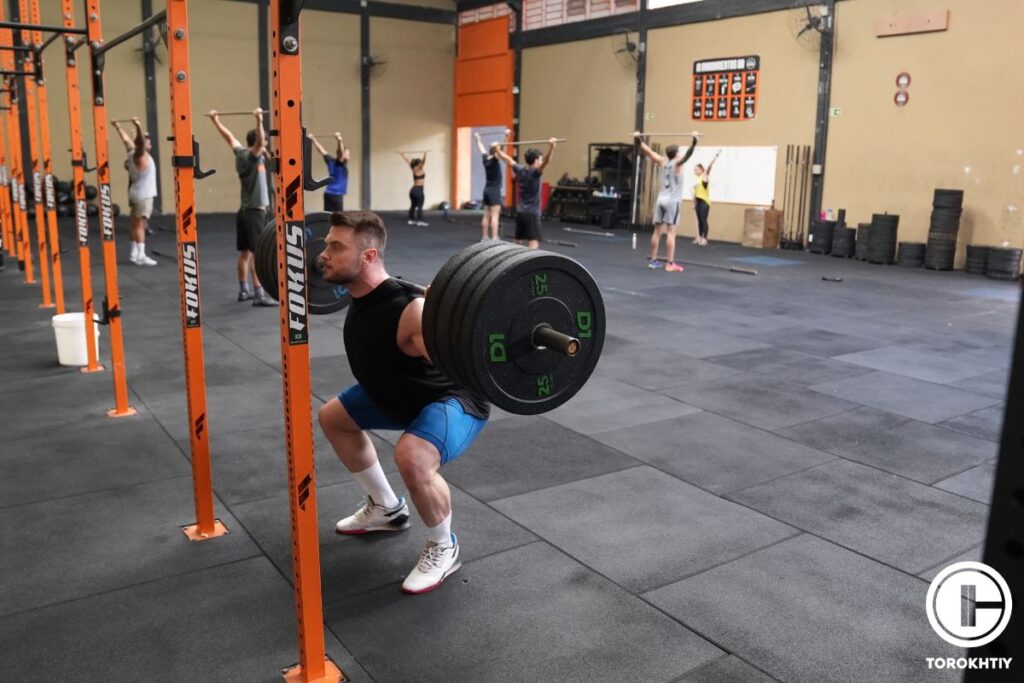
Understanding the mechanics of squatting is pivotal for appreciating how this exercise is designed not just for muscle building, but for creating a foundational strength that supports the entire body.
Squatting and Spinal Health – What Science Says?
The art of squatting is a science in motion, where each bend and lift whispers tales of our body’s capacity for strength. It is here, the quiet orchestra of moving joints and contracting muscles that we find the spine`s musculature being sculpted into greater resilience.
Squatting, country to myths of compressive harm can be sonnet of strength and spinal column, enhancing the bone density and muscular fortitude. So, do squats stunt growth – NO!
Follow us!

Free!
Get a 2-week Weightlifting Program as a bonus for the subscription to kickstart your training plan!

Free!
3 Factors Contributing to Height Variation
In exploring the heights we reach, literally speaking, we must consider the tapestry of elements that weave together to determine how tall we stand. Beyond the realm of exercise, several pivotal factors cast their influence over our stature.
1. Genetics
Our genetic code is the silent composer of our body symphony, dictating the crescendo of growth from the moment of conception. The genes inherited from our parents interlace to form the foundation of our stature. This intricate genetic web is pre-programmed with the notes of our potential height.
Observational studies, like those on twins, have consistently reinforced the idea that the hereditary script is by far the dominant force in the narrative of our height. Even the most vigorous exercises, including squatting, play only a supporting role, unable to rewrite the genetics.
Through a tapestry of real-life examples from towering basketball players, born of equally lofty parents, to the more diminutive gymnasts, whose families share a shorter lineage, we see the pervasive influence of genetics.
In the vast majority of cases, no amount of squatting could orchestrate a deviation from the genetic predisposition – making the fear that such exercises might compress our height nothing more than myth. No answer to the question can squats stunt growth become more clear.
2. Nutrition
Like a sapling that requires the right balance of nutrients to reach the height of its species, humans too need a diet rich in proteins, vitamins and minerals to attain their full growth potential. The tales of regions where stunted growth is prevalent due to malnutrition starkly contrast with stories from areas where plentiful diet supports optimal development.
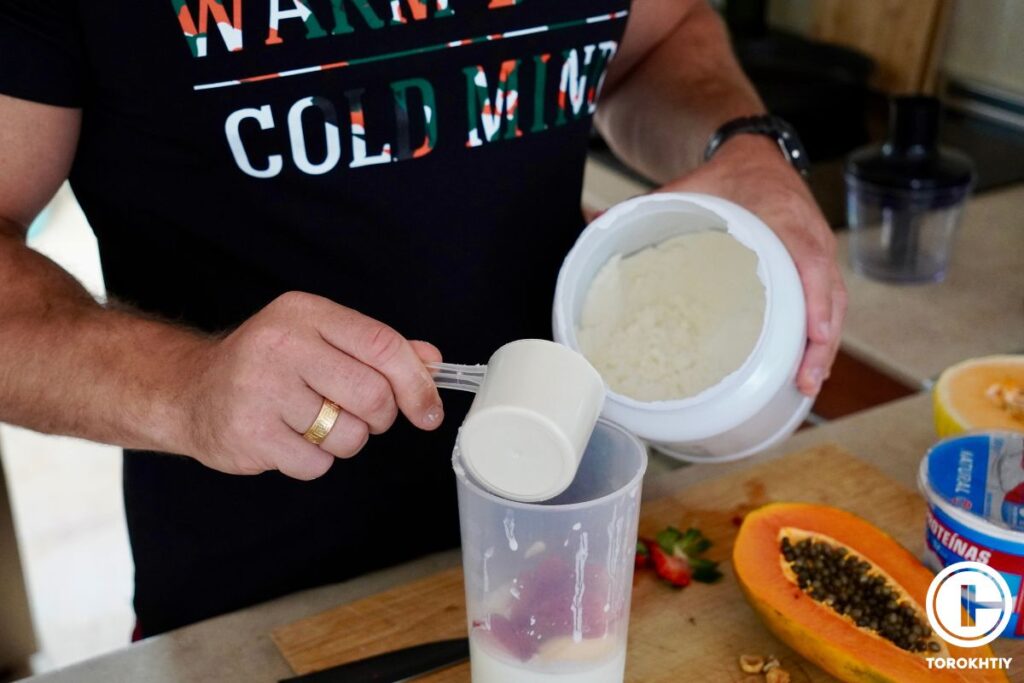
Historical accounts, like the increase in average height in post-war societies, clearly demonstrate the role of nutrition in unlocking the growth prescribed by our genes. It’s the constituents of our meals, not the barbells we lift, that fuel the growth spurts of adolescents, ensuring that the genetic blueprint is fully realized.
The role of nutrition is so pivotal that it can overshadow the benefits of physical exercise, rendering concerns about squatting affecting height, almost negligible in the larger picture of growth.
3. Environment
From the air we breathe to the quality of life we lead, every aspect of our environment plays a role in our development. Case studies, such as the difference in average height between different social economic groups within the same ethnicity, lay bare the impact of the environment on growth. We see children from affluent backgrounds, with access to abundant nutrition and healthcare, often outgrow their less fortunate peers.
While the act of squatting in a controlled gym environment is a controlled stress, the unregulated stress of an improvised environment can leave a much deeper imprint on one`s ultimate stature.
The environmental factors encompass much more than physical activity, encapsulating the totality of life`s circumstances that together, either cultivate or constrain the growth that our genetics and nutrition had set out to achieve.
🔻GET A FREE PROGRAM DEMO: 12 Week Squat Program by Oleksiy Torokhtiy
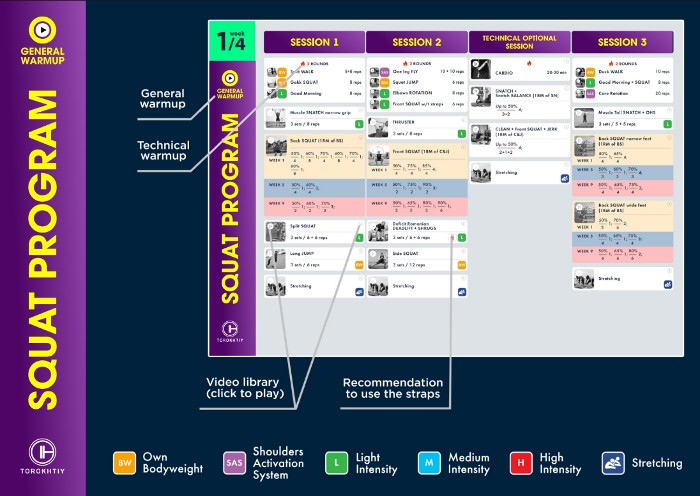
Do you want to double your squat strength? In just 12 weeks, you’ll be able to boost your squat results.
Enter your details and get a free demo (1 free week) of the squat program straight into your inbox.
How to Squat Safely?
Squatting is not just an exercise, it’s a skill that when honed, can serve our bodies throughout the lifetime. But to squat without compromise means to embrace the pillars of safety that govern this powerful movement.
To ensure proper form and safe squat, it’s vital to focus on technique. Here’s a detailed guide on how to perform a squat correctly, keeping in mind the principles of motor control mobility and stability.
1. Starting Position
Stand with your feet, slightly wider than hip-with apart. Point your toes slightly outward to align with the natural angle of your hips. This position helps in balancing and effectively activates your glutes.
Keep your spine neutral. Avoid rounding back or overextending. Maintain a slight natural arch in your lower back. Look straight ahead or slightly upwards to help maintain a good posture.
2. Descent
Begin by hinging at your hips, pushing your buttocks back, as if you are sitting in a chair. This initial movement is crucial for activating the posterior chain (glutes, hamstrings and lower back).
As you push your hips back, allow your knees to bend naturally. Ensure they stay aligned with your toes. Aim to lower yourself until your thighs are at least parallel to the floor. Deep squats can be more beneficial if performed correctly. However, depth should be determined by your mobility and comfort level.
3. Maintain Stability
Tighten your core throughout the movement to stabilize your spine and prevent injuries. If you perform an air squat, extend your arms straight out in front of you parallel to the floor or keep them crossed at your chest. This can help balance and focus during the squat.
4. Ascent
Push through whole feet to stand back up. Keep your core tight and your body stable as you rise. Avoid jerking, or bouncing at the bottom of the movement. As you ascend, focus on driving your hips to help your glutes and hamstrings returning to the starting position.
5. Breathing Technique
Breathe into your stomach as you lower your body into the squat. This helps in maintaining intra-abdominal pressure which supports the spine. Breathe out as you push back up to the starting position. This assists in engaging the core and stabilizing the lift.
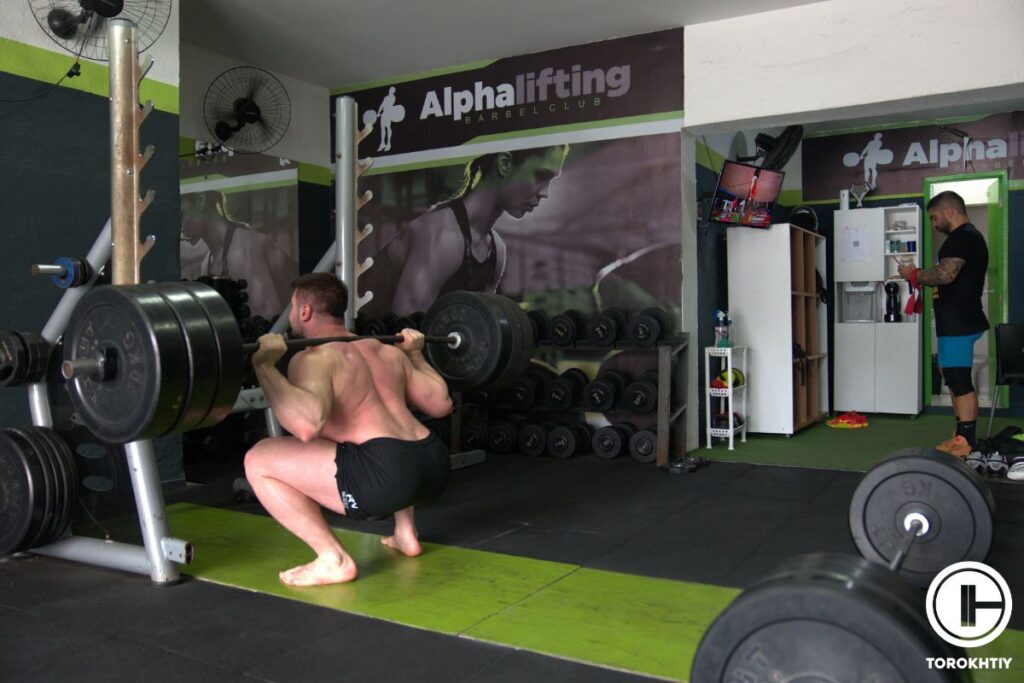
For maximal and submaximal squats, the Valsalva maneuver is commonly employed, where the lifter holds their breath during the full range of motion, only exhaling once the squat is completed or when back at the initial position.
This technique further enhances intra-abdominal pressure, offering greater spinal support and core stability through the most phases of the lift. It is crucial, however, for lifters to understand the proper application of this technique and to ensure they are good in cardiovascular health as it can increase blood pressure during the lift.
6. Motor Control, Mobility, Stability
Proper motor control ensures that every squat is performed with precision, avoiding the erratic movements that can lead to injury. Next, mobility grants the range of motion necessary to achieve the full depth of squat, without compensating in our posture or form. Stability – particularly core stability, acts as a foundation that holds the body firm in the face of fluctuating weights. Together these elements form the trifecta of safe squatting.
7. Speed and Load
When it comes to speed, it’s about the tempo that complements our body’s natural mechanics. Too fast and we may lose control. Too slow, and we might not harness the momentum needed for effective lift.
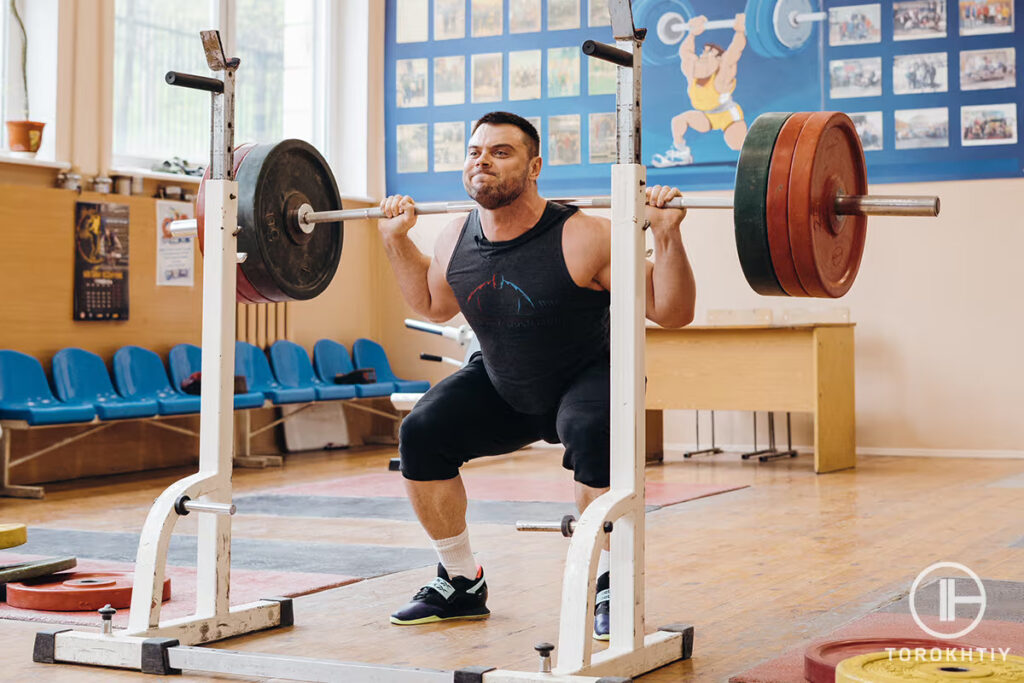
Fighting the sweet spot in speed is like a dancer finding the rhythm, essential for a performance that is both effective and safe. And when we add load, it should be in harmony with our capabilities.
Progressive overload technique, used by strength trainers, advocates for gradual increase in weight, allowing the body to adapt and strengthen without overwhelming it.
FAQ
Do Squats Increase Growth Hormone?
Squats can indeed stimulate the release of growth hormone, which is crucial for muscle development and recovery. This hormone`s natural production is a response to the intensity of the exercise, supporting overall muscle growth and strength.
Should You Squat If You’re Tall?
Tall individuals can benefit from squatting just as anyone else. Proper technique is critical: tall lifters may need to pay extra attention to form due to longer limb length, but with correct form and appropriate training program, squatting can be a highly effective exercise for people of all heights.
Conclusion
Finally we gave all answers on does working out make you shorter. Squats stand unchallenged as a bastion of strength training, irrespective of one’s height or unfounded concerns about growth. They remain a cornerstone in fostering robust spinal health and hormonal balance.
We welcome your stories and insights on how squats have shaped your fitness journey. Share your experience in the comments. Let’s learn from each other and debunk myths together, one squat at a time.
Also read:
- Does Weightlifting Make You Taller or Shorter
- 12 Exercises To Improve Squat Strength & Form
- Are Leg Extensions Bad For Knees? Exploring The Impact
- Are You Leaning Forward During Squats? Here’s the Fix
- Can You Squat Every Day Safely?
- 8 Squat Cues For Perfect Form And Strength
References:
- Lise Dubois, Kirsten Ohm Kyvik, Manon Girard, Fabiola Tatone-Tokuda, Daniel Pérusse, Jacob Hjelmborg, Axel Skytthe, Finn Rasmussen, Margaret J. Wright, Paul Lichtenstein, Nicholas G. Martin Genetic and Environmental Contributions to Weight, Height, and BMI from Birth to 19 Years of Age: An International Study of Over 12,000 Twin Pairs,
- Brendan Tinoco, Adriana Lleras-Muney, Alessandro Tarozzi, Elisabetta Aurino / 17 Aug 2022, The rise and fall of socioeconomic status gradients in height around the world,
- Kobayashi T, Seki S, Hwang I. Effects of resistance training on bone mineral density and resting serum hormones in female collegiate distance runners: a randomized controlled pilot trial. J Sports Med Phys Fitness. 2023 Jun;63(6):765-772. doi: 10.23736/S0022-4707.23.14571-3. Epub 2023 Mar 8. PMID: 36884123.
- Oshikawa T, Morimoto Y, Kaneoka K. Lumbar lordosis angle and trunk and lower-limb electromyographic activity comparison in hip neutral position and external rotation during back squats. J Phys Ther Sci. 2018 Mar;30(3):434-438. doi: 10.1589/jpts.30.434. Epub 2018 Mar 2. PMID: 29581666; PMCID: PMC5857453.
- Oliva-Lozano JM, Muyor JM. Core Muscle Activity During Physical Fitness Exercises: A Systematic Review. Int J Environ Res Public Health. 2020 Jun 16;17(12):4306. doi: 10.3390/ijerph17124306. PMID: 32560185; PMCID: PMC7345922.
- Photos made by Torokhtiy Media Team.
Why Trust Us?
With over 20 years in Olympic weightlifting, strength training, nutrition coaching, and general fitness our team does its best to provide the audience with ultimate support and meet the needs and requirements of advanced athletes and professional lifters, as well as people who strive to open new opportunities and develop their physical capabilities with us.
By trusting the recommendations of our certified experts in coaching, nutrition, and sports training programming, as well as scientific consultants, and physiotherapists, we provide you with thorough, well-considered, and scientifically proven content. All the information given in the articles concerning workout programming, separate exercises, and athletic performance, in general, is based on verified data.
The product testing process is described in more detail here.
Author: Ihor Shymechko
Pro Olympic Weightlifter, Coach
Best Results: Snatch – 208 kg,
C&J – 240 kg
Ihor has been a professional weightlifter since 1996, boasting over two decades of competition experience. His notable achievements include clinching the European Championship in 2009 and securing a silver medal in the 105kg division at the Senior World Championships in 2011. Ihor represented his country in the 2008, 2012, and 2016 Summer Olympics. After retiring from competitive weightlifting, he transitioned to coaching, leveraging his vast experience to guide athletes who now compete on both national and international stages.
Reviewed by: Oleksiy Torokhtiy
Olympic Weightlifting Champion, PhD in Sport Science
Best Results: Snatch – 200 kg,
C&J – 240 kg
Oleksiy Torokhtiy is a professional athlete boasting 20 years of experience in Olympic weightlifting. With multiple European and World titles under his belt, he has showcased his prowess in two Olympic Games (Beijing 2008 and London 2012). Upon concluding his illustrious career, Oleksiy dedicated himself to coaching. By 2022, he had conducted over 200 weightlifting seminars worldwide. He is the visionary behind an international sportswear and accessories brand known for its motto, “Warm Body Cold Mind.” Additionally, he is an esteemed author and the creator of a series of training programs and eBooks.




Still have questions after reading our article? Unlock your full potential by engaging with our experts and community! Don’t hesitate — leave a comment below and Ihor Shymechko will provide a personalized answer and insights to help you reach your goals.